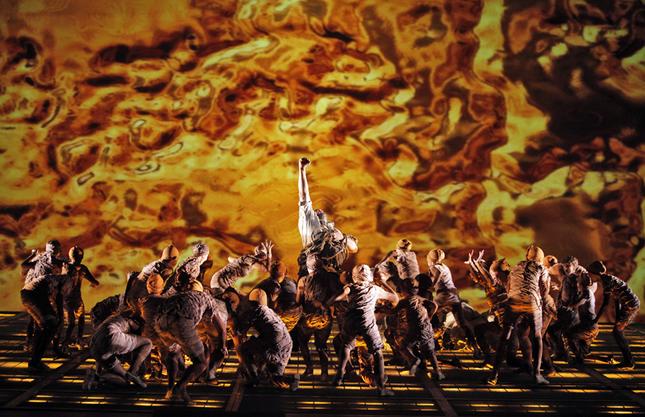Brace Yourself: The Ring Draws Near
By • April 27, 2016 0 790

The time is approaching. The Gods will awaken, rise and fall. Battles will be fought. There will be fire and dragons and Rhine maidens, heroes, giants and dwarves, magic rings and spears and swords, forbidden love, chaos and destruction, nature itself threatened.
Sorry, it’s not the upcoming Republican National Convention in Cleveland.
It’s the Ring Cycle, Richard Wagner’s epic total-theater quartet of operas. This is Washington National Opera’s first complete “Ring” production, directed by Artistic Director Francesca Zambello and rooted in her 2011 production in San Francisco.
There will be three sets of cycles of the work Zambello calls “the pinnacle of opera,” beginning with the first opera in the first cycle, a performance of “The Rhinegold” on Saturday, April 30. “The Valkyrie” follows on May 2, “Siegfried” on May 4 and “Twilight of the Gods” on May 6. The three cycles will be presented through May 22.
“It’s based on the San Francisco production, but, remember, a lot of time has passed since then, and I think the entire work is pertinent to our own lives. And I also think it resonates in the popular culture,” Zambello said. “We’re in the age of ‘Lord of the Rings,’ ‘Star Wars’ and fantasy and superhero culture with male and female heroes. ‘The Ring’ is a heroic epic, it’s full of gods and demigods, but also about man and his relationship with nature, and the destruction of the environment, all of which echoes today. I think the themes can be found in contemporary culture, politics and policies, in our society and the things that concern and haunt us today.”
While the Ring has often been controversial to some people in terms of its Teutonic mythologies and themes, Wagner was trying to achieve universal themes with the richly ambitious music, the dramatic diversity of the score and the concept of theater itself.
“He was beyond 19th-century romantic opera and music, he was after something revolutionary,” explained Zambello.
Wagner always dreamed of a kind of “total theater,” in which music, dance, librettos, scores, drama, setting and story blended into a gigantic whole. You can stage each opera separately, but the totality is beyond category, in fact daunting as a complete work. With the Ring, Wagner came as close as any artist to achieving that goal.
Zambello not only believes in the contemporary quality of the Ring, but has set the operas in stage environments that seem contemporary, modern, industrial, sharp and edgy, even apocalyptical and post-apocalyptical; this is a Ring for the 21st century. She sees the Ring as a way of staging an American epic: “The timeless themes of the Ring — the destruction of nature, the quest for power, the plight of powerless — are beyond the Nordic realms of long ago. They’re also in America’s own stories, myths, visions and iconographic images in the post-9/11 world.”
The enterprise has generated a number of astonishing pieces of data. Each cycle consists of 17 hours, including intermissions. There are 2,650 title slides. Indicative of its industrial strength, the production uses 13,000 feet of chain, 130 overhead chain motors, 950 pounds of propane, 2 elevators and 500 lighting instruments, plus 920 liters of liquid nitrogen.
The human total: 370 people on stage, backstage and in the pit, with 94 orchestra members, 74 choristers, 63 crew members, 56 supernumeraries, 39 principal singers, 33 members of the production staff, 210 members of music staff and one conductor (that would be NSO conductor Philippe Auguin).
There will have been 230 rehearsals of about three hours each leading up to the opening.
We had the opportunity to drop by the Opera House on a weekday afternoon recently for a rehearsal of “The Valkyrie,” the second of the four operas, in which Wotan, the king of the Gods, is forced to tragically confront a challenging son, Siegmund, who falls in love with Sieglinde, who happens to be his twin sister (which spells trouble), as well the fabled female warrior and daughter of Wotan, Brünnhilde.
Two things become clear during the course of the rehearsal. We are in a tempest on stage, what with a ring of fire, the warrior Valkyries parachuting from the skies and Wotan and Brünnhilde in a tragic battle on the limits of loyalty and love. It’s also clear that, like the one-of-a-kind “Tristan and Isolde,” the world of the Ring is expansive, all embracing, all-out and both fulfilling and exhaustive. For those visiting that world, it might be wise to write a will: you never know what could happen on such a journey.

